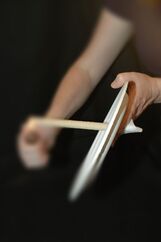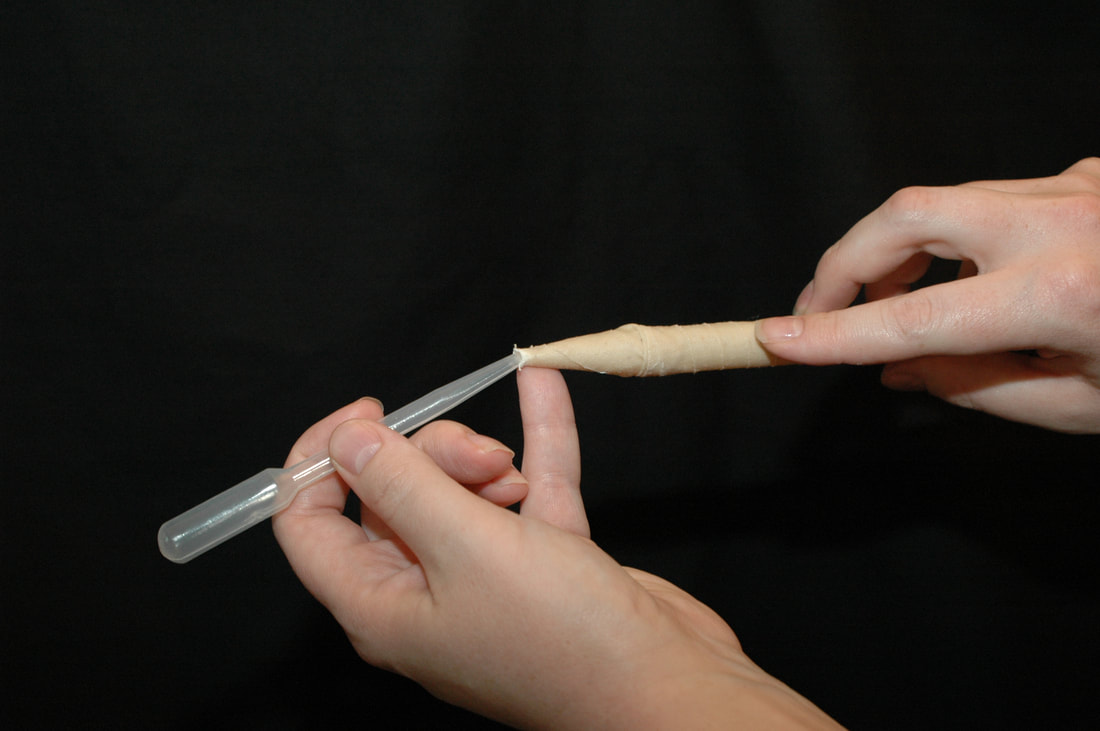Everything Ear Candle
You're here to find out how to ear candle safely.
|
How To Ear Candle At Home
Here's everything you need to know about how to ear candle SAFELY no matter what brand or wax type ear candle you use! And, you don't need those silly filters inside the tip that some companies charge you for. Supplies: 2-6 Ear Candles 1 Johnson & Johnson 2X2 Flame Retardant Gauze Pad Ear Oil Sturdy Paper Plate (chinette type) Scissors Bowl of Water Cotton Balls Hydrogen Peroxide Q-tips Towel or flame retardant head drape Lighter or matches _____________________________________ It takes 2 people to ear candle safely; one to receive the ear candling and one to give it. The person receiving should be lying down on their side with the head drape / towel draped over the head and shoulder leaving the ear exposed. Gather your materials and put on a tray close to where you are going to candle. Check the room for fans, open windows, or other sources of circulation that may affect the candle burning. You need ventilation, but a ceiling fan (for example) will cause too much air to circulate and the candle smoke won't come down to the tip end. Cut a hole, off center, about the size of a dime in the paper plate. It needs to be big enough for the candle to fit in. Cut your gauze pad in half, remove and discard the tissue lining inside the gauze pad. Place a couple of drops of ear oil on the center of each piece of gauze. Set the gauze pad aside. Put the ear candle through the hole being careful not to crush the candle. Tip the plate on it's side and light the larger end of the candle. There might be a drip or two as the flame takes hold, so light the candle away from the receiver's head. After the candle is lit, tip the plate so it is horizontal. Loosely wrap one of the gauze pads on the small end of the candle and place the small end of the candle carefully in the ear canal. The smoke many people are used to coming out the small end will come down and do its job. You can also put your finger on the tip of the candle, then release. Be sure to look at the angle of the ear canal before you start so you can place the candle in the same direction. The candle is properly placed in the ear when there is NO smoke coming out from around the ear. Gently blow around the outside of the ear to move any smoke present and wait to see if more smoke comes out. If it does, CAREFULLY and slowly twist the candle and reposition it until there is no more smoke. It is normal for the receiver to hear a crackling noise during the session as the moisture in the area is being dried up. Note: If at any time the heat from the candle is uncomfortable STOP IMMEDIATELY! A good candling session should be warm, comfortable and pain free. Let the ear candle burn 3/4 of it's length, being careful not to let the flame touch the plate. Longer candles will need to be cut every inch or so as they burn. Paraffin or beeswax candles will need to be unclogged several times during the session. Extinguish the flame, use a tip cleaner to unclog it and then relight the candle. Resume the session (as noted above). When the candle has burned 3/4, gently pull the plate and candle away from the receiver, remove the candle from the plate and extinguish the flame in the bowl of water. Do NOT attempt to blow the flame out! Discard the candle. Do not reuse the burnt candle. Open the hydrogen peroxide bottle and pour a small amount into the bottle lid. Dip the cotton swab into the lid and swab the outer portion of the ear to clean any powder residue left by the ear candle. Discard contents of the lid along with the cotton swabs. To finish, shake the ear oil bottle vigorously and place 3 drops of ear oil on a small piece of a cotton ball. Place the cotton ball in the ear and leave for at least 1 hour (overnight is best). The ear oil continues the process the ear candling started by helping loosen any impacted ear wax and coating the ear canal with beneficial essential oils. Do NOT place ear drops directly into the ear canal. Repeat above steps on the other ear. Repeat every 3-6 months or weekly during cold, flu and allergy season. |
Coming Soon: Q&A Ear Candle Questions
|
Is Ear Candling Right for You?
Does Ear Candling Work? What Are the Best Ear Candles? Where Can I Buy Ear Candles? |
FDA and Ear Candles (USA)
How Safe is Ear Candling? Take the Quiz -- Should I Ear Candle or Not? Ear Candle, Ear Cone, Hollow Cones, Earth Candles -- What's the difference? |
Questions? Contact Me!
I've been ear candling since before most of you were born. Most likely, I can answer your
questions. HOWEVER, I am retired and running the webpage to make sure you
have the tools and info you need to safely and confidently ear candle at home.
Please feel free to email me.
I'll respond as soon as I'm out of the garden or done canning!
questions. HOWEVER, I am retired and running the webpage to make sure you
have the tools and info you need to safely and confidently ear candle at home.
Please feel free to email me.
I'll respond as soon as I'm out of the garden or done canning!

















